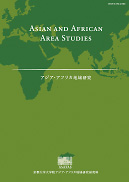Iraqi Islamist parties have been attracting considerable attention, especially after the U.S. invasion of Iraq in 2003 and the subsequent regime change from an authoritarian to a ‘democratic’ system. However, these parties experienced serious ideological antagonism amongst themselves as well as struggle for political interests.
These ideological conflicts can be traced back to the segmentation in the Da‘wa Party, the Islamist ruling party after 2005, in the 1980s. The Da‘wa Party at the time was ruled by the clerical disciples of Muḥammad Bāqir al-Ṣadr, the charismatic leader of the modern Iraqi Islamist movements. However, these clerical disciples were dismissed from the party by non-cleric leaders despite the former’s influence and guidance in political ideology. Moreover, the non-clerical leaders began consulting with Faḍl Allāh.
How did non-clerical leadership justify this segmentation, that is, the dismissal of clerical disciples, even though the later wielded a strong influence on the Da‘wa Party? This paper tackles this issue by analyzing the ideologies of the disciples, Faḍl Allāh, and the party,—especially in Wilāya al-Faqīh, a doctrine justifying the rulership of a religious authority.
This paper presents the following findings: The Da‘wa Party justified the dismissal of the disciples and the subsequent consulting with Faḍl Allāh by advocating the party’s ideological estrangement from its Wilāya al-Faqīh doctrine with respect to three points: organization/institutionalization of leadership, sole authority or several authorities, and importance of people’s support. Moreover, Faḍl Allāh shared the party’s new ideologies with regard to these three aspects. The party felt that the sense of impending crisis brought about by these clerical disciples, who were under the influence of the Iranian leader Ayatollah Khomeini, would damage the party’s independence and that its ‘Iraqi-ness’ would steer the change in its policy. In other words, the party believed that it would be able to justify the segmentations by emphasizing its ‘Iraqi-ness.’
View full abstract
